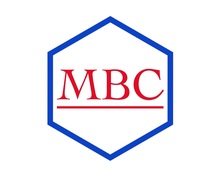
Get matched with top animal removal specialists in Cache Junction, UT
Enter your zip and get matched with up to 5 pros
Need a pro for your animal removal project in Cache Junction, UT?
Verified Reviews for Animal Removal pros in Cache Junction, UT
*The Angi rating for Animal Removal companies in Cache Junction, UT is a rating based on verified reviews from our community of homeowners who have used these pros to meet their Animal Removal needs.
*The HomeAdvisor rating for Animal Removal companies in Cache Junction, UT is a rating based on verified reviews from our community of homeowners who have used these pros to meet their Animal Removal needs.
Last update on December 11, 2025
Find Animal removal specialists in Cache Junction
The Bird Pros
The Bird Pros
Live bird and bat removal services Leading experts in bird/wildlife problems The Bird Pros have the skills to safely and quickly rescue an injured or stuck bird/animal in your home, business, or office. Our staff are highly trained animal lovers veterans, falconers, and bird lovers. With over 15 years of experience in pest control, wildlife, and security services, we are dedicated to the highest levels of service. Nest removal and relocation services are offered also (unprotected species only) Learn something new about the local Wildlife with every visit or service!
Live bird and bat removal services Leading experts in bird/wildlife problems The Bird Pros have the skills to safely and quickly rescue an injured or stuck bird/animal in your home, business, or office. Our staff are highly trained animal lovers veterans, falconers, and bird lovers. With over 15 years of experience in pest control, wildlife, and security services, we are dedicated to the highest levels of service. Nest removal and relocation services are offered also (unprotected species only) Learn something new about the local Wildlife with every visit or service!
The Cache Junction, UT homeowners’ guide to animal removal services
From average costs to expert advice, get all the answers you need to get your job done.

Your skunk removal cost will depend on several factors, including type, location, and more. Our guide will cover everything you need to know about skunk removal costs.

If iguanas are plaguing your home and destroying your property, proper removal is key. Learn the costs to expect from an iguana removal service.

When calculating fox removal costs, factor in whether you take a DIY approach or call in the pros, the number of animals involved, and the location.

Making your property less appealing to foxes involves knowing the best fox deterrents. These ideas will make your home less inviting.

Find out how to keep unwanted animals out of your yard with these easy tips and tricks so you can enjoy your property in peace.

While we might use possum and opossum interchangeably, there are small differences between the two animals that you should know about.



